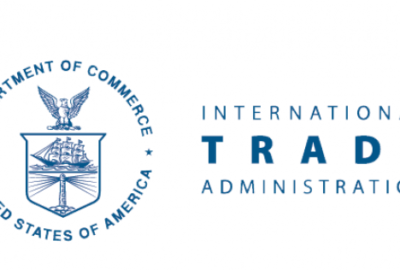
U.S. Chemical Safety Board still getting work done despite a lack of members
Not even many feds may be aware of the small, independent U.S. Chemical Safety Board. It has a critical mission, investigating industrial chemical accidents. The...
Best listening experience is on Chrome, Firefox or Safari. Subscribe to Federal Drive’s daily audio interviews on Apple Podcasts or PodcastOne.
Not even many feds may be aware of the small, independent U.S. Chemical Safety Board. It has a critical mission, investigating industrial chemical accidents. The board has had a somewhat rocky time over the past few years. Critics say it’s understaffed. But recently it got a crucial rule out the door. For an update, the Federal Drive with Tom Temin spoke to the board’s interim executive, Kristen Kulinowski.
Interview transcript:
Tom Temin: Doctor Kalinowski. Good to have you in.
Kristen Kulinowski: Thanks for having me, Tom.
Tom Temin: First of all, tell us about the composition of the board itself right now. You are awaiting members to join, correct?Kristen Kulinowski: So the Congress imagined the CSB as a five-member board of appointees nominated by the president and confirmed by the Senate. Currently, I am the only remaining member. Our last two members’ terms ended very recently, within the last couple of months.
Tom Temin: And are we waiting for nominees to be confirmed? Or what’s the status, do we know,of the board?
Kristen Kulinowski: A chair has been nominated and gone through Senate confirmation, gone through the committee, the Senate committee, and is pending on the full Senate, waiting a vote by the full Senate, so we’re hopeful that she could be confirmed any day.Tom Temin: So at the moment, you’re one of the loneliest acting chairsin all of Washington?
Kristen Kulinowski: It’s true. My side of the hallway is very dark and empty. A lot ofempty offices, but I’m optimistic that the board will return to at least quorum strength, if not full strength, hopefully soon.
Tom Temin: And another interesting piece of news is that the board finalized a rule recently, just last month, and that rule had been actually ordered by Congress as part of the enabling legislation 20 years ago. And now you’ve got it done. Tell us what the rule is and the background here.
Kristen Kulinowski: So the Congress, in our authorizing legislation, required us to promulgate a chemical incident reporting rule that would require facilities that have releases that meet our jurisdictional standards to report to us those releases so that we could determine whether or not we wanted to initiate an investigation. 20 years ago, when we first were getting started, we were able to get the information from the National Response Center, which is a Coast Guard clearinghouse for hazardous substance releases, and as the Internet and has grown,we now find ourselves getting information immediately from the news. And so we undertook an advance notice of proposed rulemaking in 2009, but determined that agency resources were better spent on other priorities, then promulgating a rule which is costly and consumes a lot of resources. So that effort stalled, and then we were sued by a coalition of environmental and civil society organizations, and we went to court and we lost. So therefore we promulgated a rule.
Tom Temin: And the rule is now final?Kristen Kulinowski: The rule is final. It has not entered its implementation phase yet. That happens in a couple of weeks. We’re also giving the community some time to learn about the rule. And so we’re going to be delaying enforcement of the rule for a year.
Tom Temin: And briefly, what does the rule require and who does it require it of?
Kristen Kulinowski: So it requires facilities that have a release of any hazardous substance, subject to certain conditions, mainly consequence thresholds–number of deaths, number of injuries, property damage–to report either to CSB directly or to the National Response Center with notification that it has been made to the NRC,so that we will get the information now directly.
Tom Temin: Got it. It sounds like the procedure is similar to what would happen to a regulated facility under the EPA rules.
Kristen Kulinowski: So oftentimes, when we deployed to an incident, there are multiple federal agencies investigating the same incident. We find ourselves at the same scenes with OSHA and EPA. They have distinct reporting requirements and distinct investigation objectives. So our role as an independent federal agency that does Investigations is not duplicative of theirs. And so we needed our own rule.
Tom Temin: But there’s a lot you could probably borrow procedurally that they had in placeKristen Kulinowski: We’re a little bit more alike. The National Transportation Safety Board than we are like the regulatory agencies, because we don’t have a regulatory function. In fact, we were explicitly modeled after the NTSB. Wehave some unique differences in how we operate, but that’s a better analogy.
Tom Temin: We’re speaking with Doctor Kristen Kulinowski. She is the board’s interim executive. That is the U. S. Chemical Safety Board and just tell us about what the purview of the board is, what types of chemicals, what types of facilities, do you go to investigate?
Kristen Kulinowski: So our jurisdiction is a release of a hazardous substance into the air from a fixed source, meaning not in transportation, because that’s our brethren at the NTSB. And so when there is a major chemical release that has killed people, injured people or damaged property, we have the authority by the U. S. Congress to go in and conduct a root-cause investigation to understand all the causes, facts,conditions, and circumstances that led to that disaster. We go far deeper than our other regulatory agencies in that we’re not limited to only looking at violations of regulations: We can also look at systemic factors management systems on a number of other factors, in addition to what widget broke and and what people were doing in the immediate.
Tom Temin: Yes, so a facility could be in compliance with rules and regulations, but a valve could have broken or something like that.
Kristen Kulinowski: Sometimes it’s mechanical failures. They may be due to lack of good preventive maintenance. And there’s a regulation that covers that. The unique aspect of the CSB is that we’re able to identify gaps in regulations. So if all the regulations were being followed, but the regulations weren’t strong enough, we have the ability to make a recommendation to a regulatory agency in addition to the facility, to make a change that we feel is needed to advance safety.
Tom Temin: All right, so the rule with reporting is not quite operational yet: Another year. Suppose you do find out about a spill: There’s no board members, or you’re the only one right now, what happens?Kristen Kulinowski: We can still deploy. So, the ability of the CSB to deploy to incidents is not limited by the lack of a quorum. What may take a little bit longer is for us to release our final reports. So the way the board operates our governance model is that the final reports constructed by our investigation staff come to the board for final approval. The board votes to release that report. It contains, or may contain, recommendations for safety change, which we then track and vote to close, and all of that is a very formal process. So what we’re doing right now internally, is expoloring our options for getting the important safety lessons out in the absence of a quorum.
Tom Temin: But the people who deployed to an actual accident scene are career professionals that understand chemicals and plants and process, not necessarily the board members themselves?Kristen Kulinowski: That’s correct. We have very dedicated safety professionals, many of whom have spent decades in industry before coming to the board, and they’re the boots on the ground that are actually performing the day-to-day work.
Tom Temin: Any recent cases that are illustrative?
Kristen Kulinowski: Well, we’ve had a busy year, Tom. Very busy year. We’ve deployed several times to the Houston area and to Texas, where there’s a large petrochemical industry.
Tom Temin: There’s been some big blowups.
Kristen Kulinowski: Big investigations, some loss of life, a lot of outside-the-fenceline property damage to communities. The last one that I went to was the Watson Grinding, a manufacturing facility in Houston, which was a major explosion that killed two people, and the devastation to the surrounding community was catastrophic. There was garage doors buckled and houses shifted off their foundations as far as a quarter to a halfa mile away. So that was a very impactful incident.
Tom Temin: And tell us about yourself. You are the acting executive here. What is your background? You’re you’re not new to this whole field of chemical investigation.
Kristen Kulinowski: That’s right. I’ve been on the board now for four and a half years, and it’s a five-year term, and I’m a chemist by training, a Ph.D chemist. And I had experience working in occupational health and safety of emerging materials. And so when I was tapped for the board position, I was very excited to apply my technical background to an important safety mission.
Tom Temin: Can you be reappointed if you like it?
Kristen Kulinowski: I would have to go through a full nomination process, so I would have to be nominated by the president and confirmed by the Senate.
Tom Temin: May not be worth putting your life on hold that much, huh?
Kristen Kulinowski: I haven’t gotten the call, Tom.
Tom Temin: Sure. Doctor Kristin Kulinowski is interim executive of the U. S. Chemical Safety Board. Thanks so much for joining me.
Kristen Kulinowski: Thanks, Tom, for having me. It’s been a pleasure.
Copyright © 2025 Federal News Network. All rights reserved. This website is not intended for users located within the European Economic Area.




